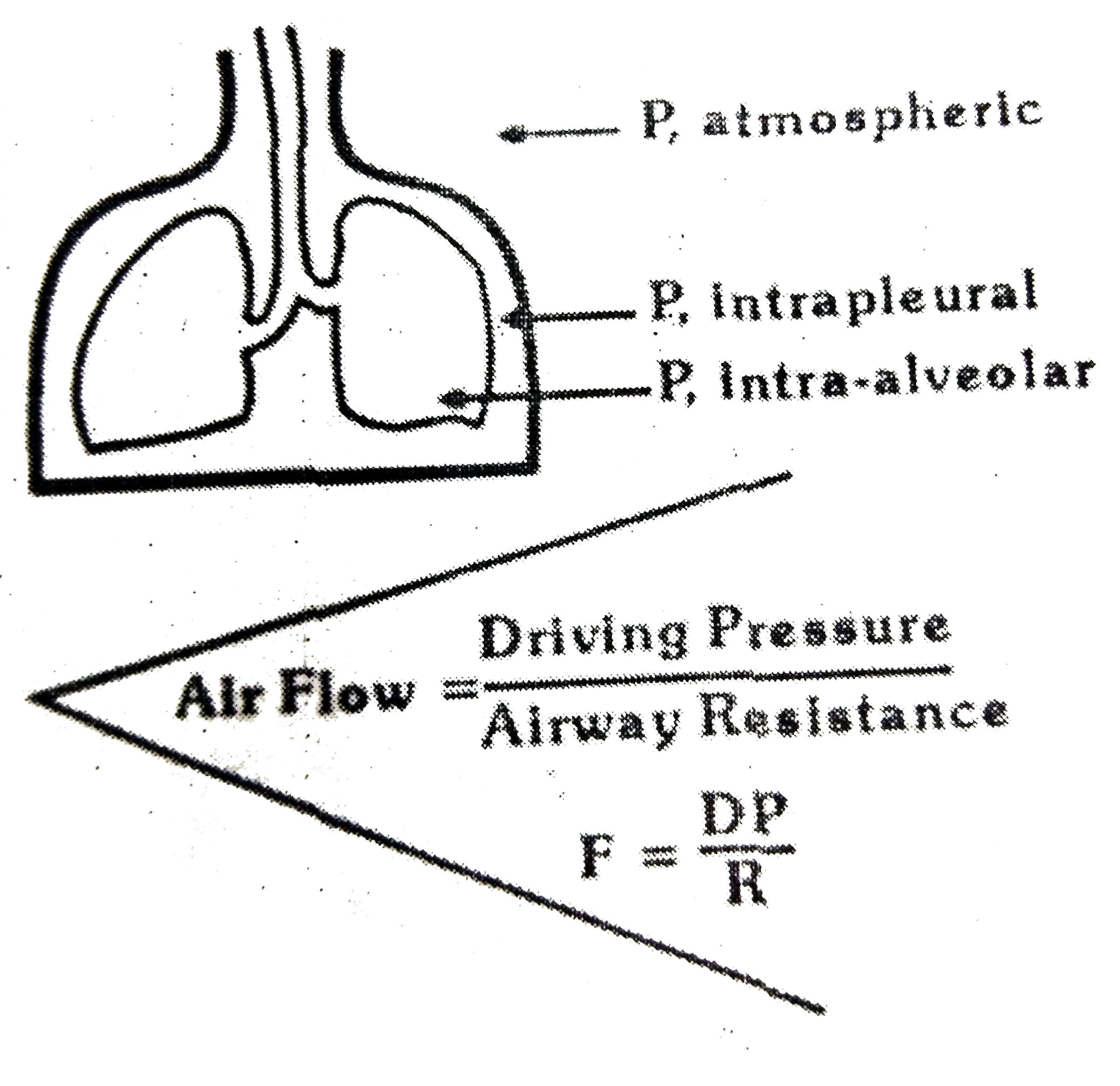Pulmonary ventilation movements are due to :
Costal muscles
Diaphragm
Wall of lungs
Costal muscles and diaphragm
The correct Answer is:D
Step-by-Step Solution:
1. Understanding Pulmonary Ventilation:
- Pulmonary ventilation refers to the process of moving air in and out of the lungs, which is essential for gas exchange.
2. Identifying the Muscles Involved:
- The primary muscles involved in pulmonary ventilation are the diaphragm and the intercostal muscles (which include both internal and external intercostal muscles).
3. Role of Intercostal Muscles:
- The intercostal muscles are located between the ribs and are divided into:
- External Intercostal Muscles: These are responsible for forced inhalation by lifting the rib cage and expanding the thoracic cavity.
- Internal Intercostal Muscles: These are mainly involved in forced exhalation by pulling the rib cage down and reducing the thoracic cavity's volume.
4. Role of the Diaphragm:
- The diaphragm is the primary muscle of respiration. It contracts during inhalation, increasing the volume of the thoracic cavity, which allows air to flow into the lungs. During exhalation, it relaxes, decreasing the volume and pushing air out of the lungs.
5. Evaluating Other Options:
- The wall of the lungs does not actively participate in the movements of pulmonary ventilation, so it is not a correct answer.
- The term "costal muscles" is often used interchangeably with intercostal muscles, but it is important to note that the diaphragm is also crucial for ventilation.
6. Conclusion:
- The correct answer to the question is that pulmonary ventilation movements are due to both the diaphragm and the intercostal muscles.
Final Answer:
- The pulmonary ventilation movements are due to the diaphragm and intercostal muscles.
---
- Pulmonary ventilation refers to the process of moving air in and out of the lungs, which is essential for gas exchange.
- The primary muscles involved in pulmonary ventilation are the diaphragm and the intercostal muscles (which include both internal and external intercostal muscles).
- The intercostal muscles are located between the ribs and are divided into:
- External Intercostal Muscles: These are responsible for forced inhalation by lifting the rib cage and expanding the thoracic cavity.
- Internal Intercostal Muscles: These are mainly involved in forced exhalation by pulling the rib cage down and reducing the thoracic cavity's volume.
- The diaphragm is the primary muscle of respiration. It contracts during inhalation, increasing the volume of the thoracic cavity, which allows air to flow into the lungs. During exhalation, it relaxes, decreasing the volume and pushing air out of the lungs.
- The wall of the lungs does not actively participate in the movements of pulmonary ventilation, so it is not a correct answer.
- The term "costal muscles" is often used interchangeably with intercostal muscles, but it is important to note that the diaphragm is also crucial for ventilation.
- The correct answer to the question is that pulmonary ventilation movements are due to both the diaphragm and the intercostal muscles.
- The pulmonary ventilation movements are due to the diaphragm and intercostal muscles.
Topper's Solved these Questions
- BREATHING AND EXCHANGE OF GASESBOOK - MODERN PUBLICATIONCHAPTER - BREATHING AND EXCHANGE OF GASESEXERCISE - CHAPTER PRACTICE TEST
14 Videos
- BREATHING AND EXCHANGE OF GASESBOOK - MODERN PUBLICATIONCHAPTER - BREATHING AND EXCHANGE OF GASESEXERCISE - COMPETITION FILE (ASSERTION TYPE QUESITONS ):
11 Videos
- BODY FLUIDS AND CIRCULATION BOOK - MODERN PUBLICATIONCHAPTER - BODY FLUIDS AND CIRCULATION EXERCISE - Chapter Practice Test
15 Videos
- CELL : THE UNIT OF LIFE BOOK - MODERN PUBLICATIONCHAPTER - CELL : THE UNIT OF LIFE EXERCISE - Chapter Practice Test (Section-E)
1 Videos
Similar Questions
Knowledge Check
lung ventilation movements are due to
Acostal muscles and diaphragmBcostal musclesCdiaphragmDwall of the lungsThe stomatal movements are due to
APressure of water vapour insideBturgor pressure of guard cellsCGenetic constitutionDNone of theseTropic movement is due to
ACell elongationBCell divisionCBoth A and BDCell thickening.
Nyctinastic movement occur due to the
View SolutionPulmonary vein carries
View SolutionPulmonary vein carries
View SolutionIn mammals ventilation movements of lungs are governed by
View Solution
The alveolar ventilation per minute refers to the amount of fresh air which reaches the alveoli of the lungs per minute. Alvelor ventilation per minute equals the
View Solution
